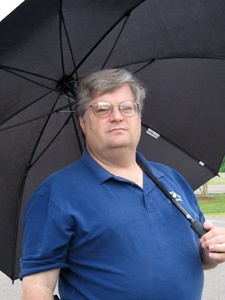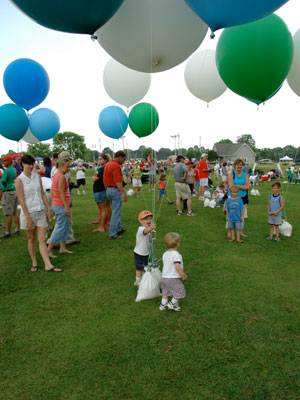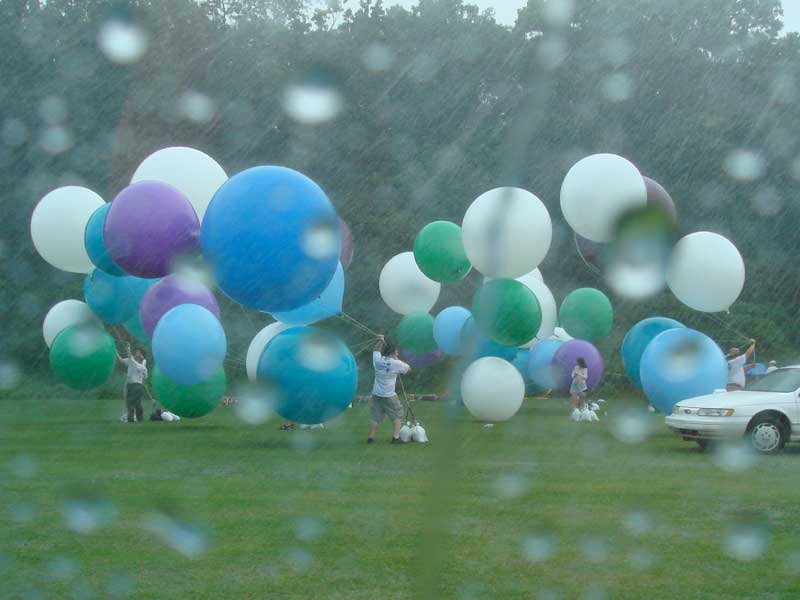
#20: Decatur, Alabama
May 28, 2006

Alabama |
 #20: Decatur, Alabama May 28, 2006 |
 |
|
As you might guess, "Alabama" is an Indian word: the name of a tribe who once lived in the central part of the state and have long since fled to Texas. No one is certain what "Alabama" means. Early linguists theorized that it might be Muskogee for "here we rest". After that was debunked, less poetic lingusts argued that it might be Choctaw for "thicket-cutters". The state seal of Alabama, instead of the usual goddesses with swords or scythes, or sheaves of wheats or curling banners with bits of Latin on them, is a simple map of the state, with the names of rivers and adjacent states helpfully noted. Similarly, the flag of Alabama is very simple: a red Saint Anthony's cross on a field of white. "X" marks the spot. Here we rest. The thicket-cutters. |

| Decatur, Alabama is located in the northern part of the state, along the Tennessee River. About 50,000 people live in Decatur. There is a small historic district, and a very much larger area filled with subdivisions and the same chains and franchises you might see anywhere. The combination of river traffic on the Tennessee, railways and the airport in nearby Hunstville make Decatur a popular location for industry. Large manufacturers such as GE, 3M, Goodyear and Boeing all have plants there. |

 |
 |
|
 Phil Gentry |
|
My crew chief Bob Dunnington joined me in Decatur on Friday of the Memorial Day weekend. We spent the day doing our prep work for the flight, which was schedule for Saturday afternoon. That night, we got to attend the Decatur Daikin Festival, a Japanese festival sponsored by the Daikin Corporation, a Japanese firm with a large plant in Decatur. The festival is free of charge and open to the community. It was a sight to see Alabamans in happi coats, participating in traditional Japanese street dancing. |
 |
 |
|
Afternoon flights are always a little trickier than flying in the morning from a wind and weather perspective, particularly in areas prone to afternoon thunderstorms; however, the Jubilee wanted me to fly when they had the most spectators. For Saturday afternoon, the forecast included only a slight chance of thunderstorms -- 20% according to the National Weather Service. Checking the weather just before leaving the motel for Point Mallard on Saturday, I saw nothing on weather radar. At the park, I spoke with the balloonmeister, Larry Fuller, and one of the other local balloonists, both of whom thought the conditions looked pretty reasonable to start the inflation. |
|
 |
 |
 |
 |
 |
 |
|
|
It started to sprinkle.... and then outright rain.... and then rain REALLY HARD. The wind came up, and the balloons began to flail around wildly. The volunteers had to hold on to them to keep them from dragging away, while all the water came off the balloons in sheets. |
|
|
|

|
Everyone was drenched when the rain finally stopped. And then, after about half an hour, the clouds came back overhead and dumped rain on us a second time. |
 |

|
 |
|
|

|
|
I discussed the situation with the resourceful Phil. He made some phone calls and somehow managed to reach the helium company (it being early Saturday evening) -- and got them to agree to bring out some additional helium tanks in the morning. We then asked the wet and bedraggled inflation crew if they would return at 5:30 AM tomorrow, which a surprising number agreed to do. |
|
 |
|
We turned in a for a few hours of sleep, unsure what the morning would hold. |